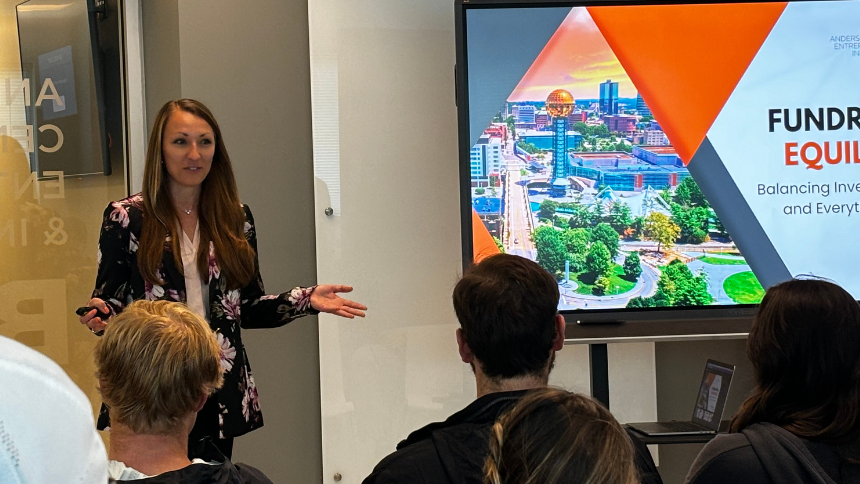
Tips from the experts: Raising and managing capital
Lia Winter, Founder of Winter Innovations and ACEI Entrepreneur in Residence was the key speaker at last Thursday's "Lunch and Learn" event.
It wasn’t long ago when Lia Winter stood before a panel of judges at Vol Court, a pitch competition organized by the Anderson Center for Entrepreneurship and Innovation (ACEI). She was a high-performing MBA student who was passionate about bringing new stitching processes and materials to market for orthopedic surgeries. Her product “EasyWhip” helped her secure $30,000 from student pitch competitions.
It has been nearly five years since she debuted her product. Today, she is the successful Founder of Winter Innovations and an Entrepreneur-In-Residence for the Anderson Center.
So, how did she make the transition from student to start-up? Winter mastered one major skill: finding funding.
She traveled around the world for pitch competitions and managed to secure $150,000 just from competing. She has applied for and successfully secured more than a million dollars in grants, and also received significant private investments.
There are two different sources of funding: Investment (dilutive) and grants (non-dilutive).
An investment brings more decision-makers into the equation and gives more people equity in the business.
“The typical path for the investment route is to raise money from family and friends and bootstrapping, and then move into a pre-seed, series A, series B, and so on,” she shared. “Depending on the company, their raising goals will vary drastically.”
Founders pursuing the investment route will need to predetermine how much they want to raise, research investors, pitch, go through due diligence processes (which can take a long time), and negotiate terms.

Grants, on the other hand, are a bit more difficult to land. They can take months, and in some cases years to come to fruition. It takes a lot of research, time, and attention to the details of eligibility.
She said there are three different branches of grants that entrepreneurs can pinpoint: pitch competitions, government grants, and organization donations/ grants.
Winter is one of the lucky companies to have received an SBIR Phase I grant of $275,000, and the SBIR phase II grant of %1 million.
“This is a big deal,” she said. “Many strings attached say where I can and cannot spend the money. But, when you receive an SBIR grant you become essentially a portfolio company of the United States.”
Winter said there’s no “bad” route to go when it comes to funding a start-up. She said it will work differently based on the type of company, product, or service.
Winter’s session concluded the ACEI Lunch and Learn series for the Spring Semester.
Like what you've read?
Forward to a friend!

